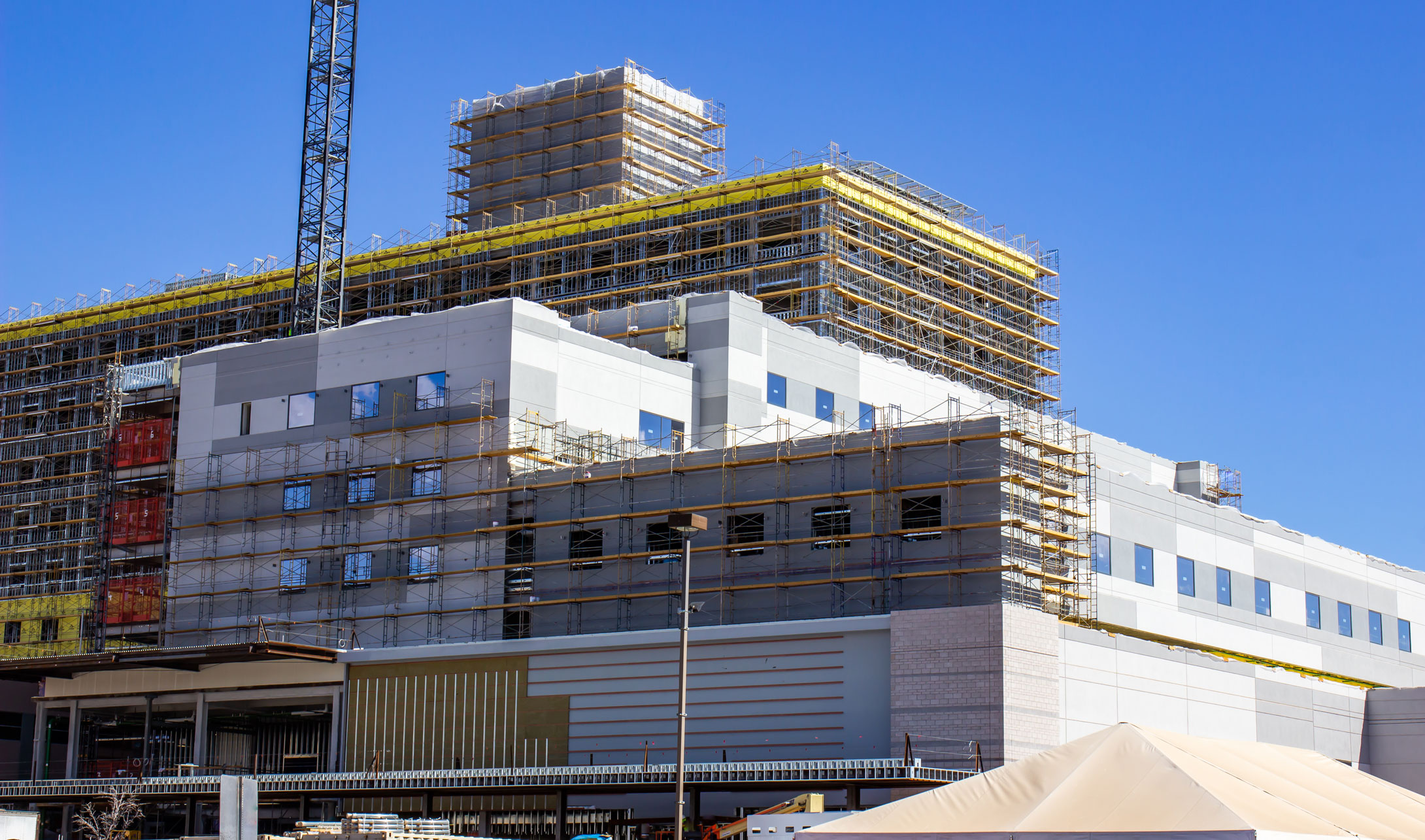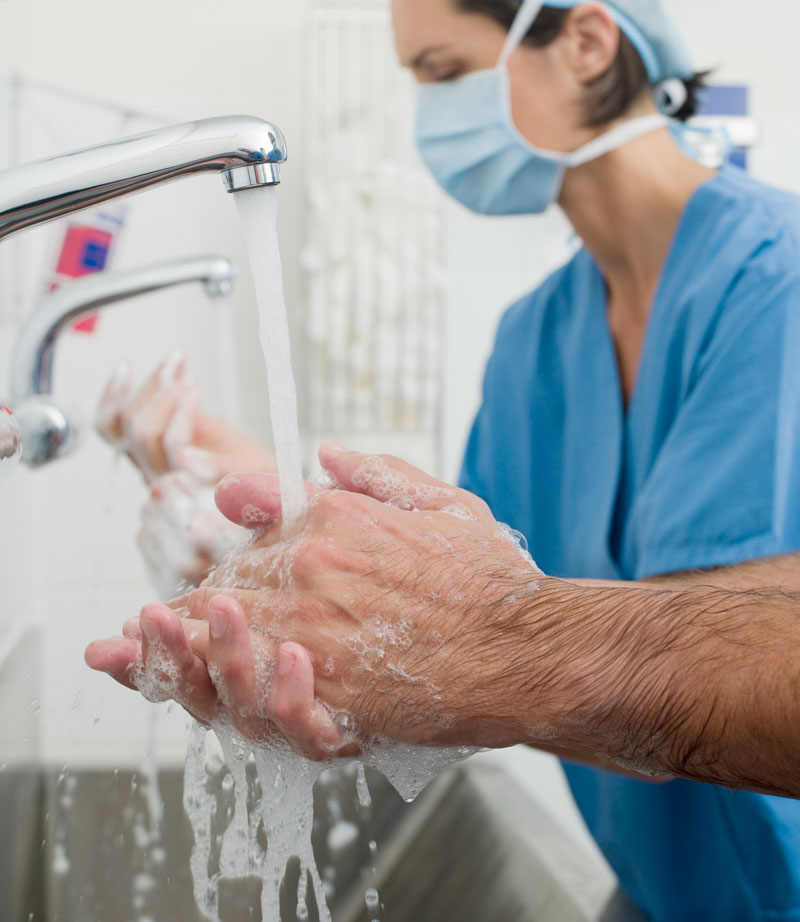
THE BENEFIT — IN DOLLARS AND HEALTH OUTCOMES — IMPROVES IMMENSELY WHEN THE SYSTEM IS BUILT OPTIMALLY FROM THE START
Recently, I was reading a blog post authored by my friend and colleague Christoph Lohr; his piece titled “Water in Health Care Facilities – The Public Health and Economic Nexus” inspired me to provide further insight into some of the problems that exist in our health care facilities. As Christoph stated, there has been a monumental increase of 450% in U.S. cases of Legionella, the water-borne bacteria that causes Legionnaires’ disease, since 2000. It’s no wonder facilities can’t find it within their budgets to get ahead of the crumbling infrastructure that plagues so many hospitals in the United States. Unfortunately, many facilities with critical environments are indebted to their own aging assets. Health care facilities, specifically, must reimagine their approach to maintenance by introducing digital data logging and fail mitigation components, or risk increasing threats to health and safety.
As a fourth-generation plumber, I’ve seen the slow evolution of plumbing components over the last many decades as it relates to digitalization. Finally, as we enter this new age of analysis and surveillance as it relates to plumbing systems that are so incredibly important to the health of our society, the pace of innovation has increased. New tools range from digital thermostatic mixing valves that track temperature variation and provide electronic intervention when working parameters fluctuate, to schedule-based solenoid valves that relieve the building of stagnant and aging water. These new tools, added to traditional analog systems, will allow building owners and operators to get ahead of problems before they occur. This approach, in essence, provides a cheaper fix to the catastrophic “shut ’er down” response often utilized upon the failure of a major component or pathogen outbreak.
I decided to do a cost experiment with the information provided in Christoph’s article and started with an estimate for remediation to a Legionella outbreak in a fictional health care facility. It became painfully obvious that when comparing outbreak remediation expenditures versus modifying new construction budgets to include an additional 1% investment toward a more resilient digital plumbing system at the inception of a project just how much net good that adjustment may do.

Since 2000, United States cases of the waterborne bacteria Legionella have increased by 450%, a statistic especially
alarming within health care facilities. GETTY IMAGES
The Simulation
In this scenario, we will simulate a mid-size expansion project of a 10-bed hospital wing in New York City where an analog plumbing system was installed for operation.
What We Know
The average cost of a U.S. hospital construction per inpatient bed is somewhere in the range of $500,000 to $1.5 million, according to multiple sources. Spending a night in the bed isn’t cheap either, with the U.S. national average at a rate of $10,000 per night in your standard inpatient room. When it comes to plumbing-related construction costs, historical data shows plumbing construction at just around 5% for the average project budget.
Fast Math
Let’s use $1 million per bed as an average cost for health care construction in this thought experiment.
The 10-bed expansion project is budgeted for $10 million ($1 million per bed) and a new analog plumbing system would be valued at roughly 5% of construction costs, according to what we know.
At 5% of budget, the plumbing work has an expected value of $500,000 for the $10 million fictional New York City facility. Fork in the Road The analog system we know exposes us to the same metrics of dollars lost, just as it has before by simply not updating the archaic design that has historically aided in the amplification of Health Care-Associated Infections (HAI).
Assuming an additional 1% investment in plumbing related costs to use modern and automated components, $50,000 would be needed to upgrade this theoretical system. This added cost now changes the total cost of plumbing construction from $500,000 to $550,000 for the $10 million project, in this fictitious exercise.
By having the intuitive plumbing system commissioned from Day One of operation, we would be able to slow the monies lost from water-related HAI, due to the predictive nature of these devices, that alert us ahead of proliferation.
These components, properly placed and under the right supervision, could allow hospitals to increase revenues from available bed space by getting ahead of outbreaks and aiding in thorough circulation and monitoring of long-term disinfectants.

How it Plays Out
It’s opening day at the new 10-bed wing in New York City, the ribbon has been cut, and we then we find out the there was a failure to perform the disinfection of the potable water system after construction. The new wing was outfitted with traditional non-automated plumbing components, and fixture aerators show that a proper flushing post-construction never occurred. The system is not off to a great start. The facility hires a group of experts to perform water sampling and when the certified laboratory results arrive, they are not pretty. We have 40% positivity of Legionella Pneumophila Serogroup 1 from 10 hot water samples taken throughout the new inpatient wing.
The analog system not only didn’t receive its initial disinfection and flushing, but it never was properly outfitted with modern components that detail the system history of use. The new system cannot stay balanced for temperature and flow, allowing the growth of bacteria throughout the system’s biofilm at rates much faster than its counterpart, the digital system that boasts notifying mechanisms and automated flushing functionality to reduce water age.
Keep in mind this building is in New York City and our laboratory results had a reading of greater than 30% positivity, meaning 3 or more of our 10 rooms showed levels above our limit of detection (LOD). This hospital would now be required to provide a formal notice to the Department of Health and demonstrate a less than 30% positivity on that same system for three consecutive months with certified laboratory results.
The state of New York is one of the few that have public health laws regarding Legionella and culture results, with the New York Administrative Code Part 2, Subpart 4-2, inclusive of “Appendix 4-B,” which is specifically written for health care or as they refer to it as “covered facilities” falling under the guidelines of “article 28,” N.Y. Comp. Codes R. & Regs. tit. 10, § 4-2.4, 10 NY ADC 4-2.4.
In a situation such as this, hospital facilities with analog plumbing systems have only a few options. There is the option to implement a manual flushing protocol if it can be coordinated between environmental services and the engineering departments. Point-of-use filters can be installed on faucets and shower heads at added expense. Other options include discontinuing water usage in the patient room temporarily and supplementing with bottled water, while professionals remediate with a disinfectant, flush for safety, and perform resampling. All of these responses have negative impacts to operations and revenue due to expenditures of unplanned labor and costly materials, not to mention the increased risk to the already immunocompromised patients.
The Takeaway
If the most conservative approach is taken and the hospital isolates and closes the four positive rooms for two days to perform a hyper-chlorination and flush to resample, we can assume from our gathered data that at a national average of $10,000 per night to stay in an inpatient bed, each of the four rooms being out of commission for two nights of remediation would result in an assumed loss of $80,000, simply by losing the patient stay.
If we add a conservative 25% contingency to cover remediation labor and laboratory costs, that hospital has now lost $100,000 during that first month of prescriptive maintenance, with no certainty that next month will be any better.
If we revert to the beginning of this economic experiment, we assumed that by spending an additional 1% up front we could reduce these costs on the back end. In the scenario of the 10-bed hospital, the added cost to update from to a digital system from an analog system ($50,000) would have cost half of the expenditures used to remediate the very first outbreak of Legionnaires’ disease.
This is just the tip of the iceberg when we consider the costs of remediating an impacted plumbing system or the intricacies of intelligent plumbing system eco-systems. If we take a long, hard look at the gap between the added investment toward a digital system versus the costs of HAI, the justification to smarten up becomes an easy decision.
So, when the sticker shock of a new digital plumbing system fades, you can think back to this experiment and its rough figures to help make the case for these modern, life-preserving upgrades the plumbing industry is working diligently to expand and evolve.

John Mullen
John Mullen brings new energy into the plumbing and mechanical industry, with nearly two decades of unique leadership experience and vision for more intelligent and sustainable systems. As a fourth-generation plumber, John has engaged in a multitude of complex plumbing projects from the position of a budding apprentice to a highly accountable company executive.
Running operations for large union plumbing and mechanical outfits, John has helped maintain high profitability and has enhanced focus on safe installations for many notable projects on the East Coast of the U.S. With cultivated skills in team development, he has played a key role in system compliance and safety for sectors such as health care, hospitality data centers and more.
While living in New York during the COVID-19 pandemic, John spent time as a corporate manager of a multicampus academic health care organization. This shift from constructing hospitals to working on the inside provided a spectacular opportunity to manage the systems he typically would leave with his clients. This incredibly specific role came with direct responsibility for the compliance and resiliency of numerous medical gas and plumbing systems. With John’s love for technology, automation and systems he successfully built digital programs that will continue to evolve throughout the years, leaving a lasting impact on patient quality.
More recently, John has assumed the role as director of Technical Services at IAPMO, where he will engage with industry professionals throughout the world, bringing together the best and brightest minds to work together on safety initiatives and code-related topics. With the team at IAPMO, John will add to the library of technical content being published for education and advocacy, continuing the tradition of providing safe, resilient plumbing systems to the public.
Last modified: May 8, 2024
